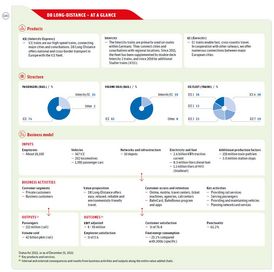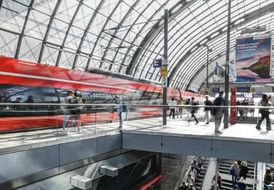Business model
DB Long-Distance offers customers comfortable and environmentally friendly travel within Germany and into neighboring countries. Regularly scheduled daily services with the ICE/Intercity/EC fleet form the backbone of long-distance transport. Offerings are being expanded by island traffic to Sylt and Wangerooge.

The key performance indicators are the number of passengers, passenger satisfaction, operational punctuality, employee satisfaction and operating profit (EBIT). Management focuses in particular on the performance indicators volume produced, volume sold and load factor. Costs largely correlate with the planned volume produced, which is derived from the services offered. Some of the costs, such as for train-paths, station stops and energy, depend on the actual volume produced. Resource assignments of personnel and facilities are aligned with the annual schedule in order to optimize the unit cost per train kilometer traveled. The key cost drivers here are personnel, maintenance and infrastructure expenses, which is why the business is fixed-cost intensive. Only a small portion of expenses vary with the load factor.
The most important sources of income for long-distance transport operated on a purely commercial basis are revenues from the sale of tickets and BahnCards.
Our employees, a modern vehicle fleet and a high-quality infrastructure are decisive for success. This is why intra-Group infrastructure companies and service providers as well as the vehicle industry are important partners. Furthermore, cooperation with partner railways is very important for cross-border connections and night train services.


